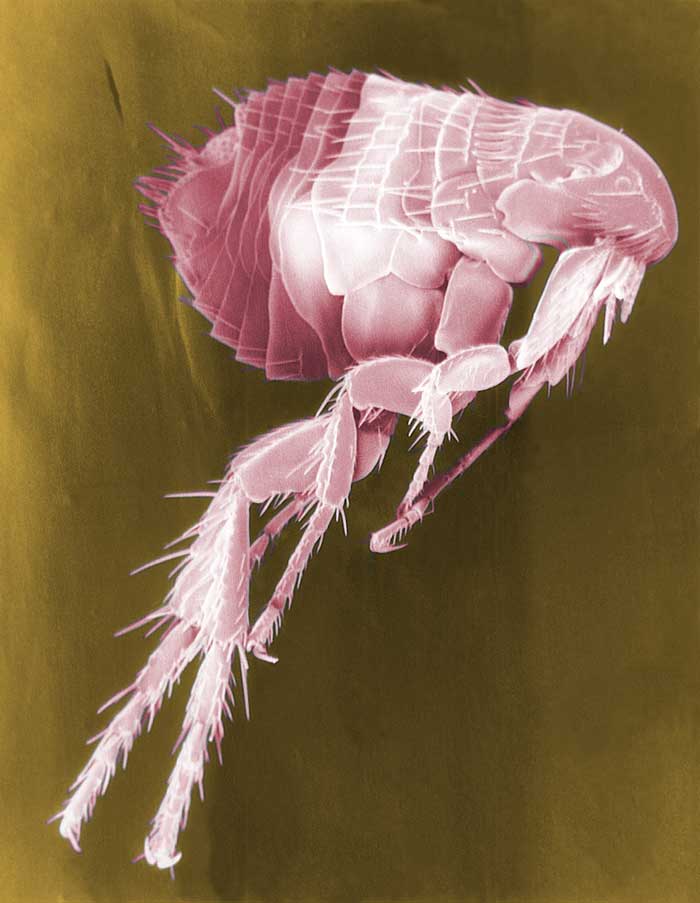20 Oct 2020
Small animal parasites – are pet owners getting the year-round message?
Hany Elsheikha discusses the clinical impact of infestation on pet health and potential solutions practices can implement to improve clients’ compliance with preventive strategies.


In a profession faced with numerous challenges, the end-user experience can sometimes be overlooked.
Undoubtedly pet owners are always willing to do all they can to protect their pets and keep them healthy. However, pet owners’ commitment to the therapeutic and preventive regimens provided by the animal health care professionals varies considerably. This seems to be the case when it comes to the management of ectoparasite infestation in dogs and cats.
Current evidence indicates the risk of flea and tick infestations is not restricted to a single season, suggesting the need for year-round ectoparasite control. However, the lack of interest of pet owners for adopting the new pre-emptive approach can potentially leave companion animals and their owners at risk of many infections.
Adherence to a treatment or preventive programme is a multifactorial process and different variables can influence how well owners comply with the instructions provided by animal health care professionals.
Any intervention to persuade owners and improve their adherence to any given preventive treatment should consider increasing their knowledge and awareness, and explaining and providing evidence-based facts.
Veterinary surgeons, veterinary nurses, receptionists and pharmaceutical companies can all play a role in enhancing owners’ motivation to the implementation of year‑round ectoparasite control strategy. Most importantly, they should always keep the owners and pets at the forefront of their minds.
Clinical impact of ectoparasite infestation on pet health and welfare
Flea infestations are highly prevalent and associated with many adverse consequences on the health and welfare of the companion animals.
Adult fleas are haematophagous pests, feed only on the host’s blood, and can lead to severe blood loss and anaemia during heavy infestations. Fleas can also cause severe irritation and pruritus, which can progress to hair loss and serious skin pathologies, which can deteriorate the animal’s welfare (Bouhsira et al, 2012).
Animals may develop a hypersensitivity reaction to the flea’s salivary proteins following flea bites (McCoy et al, 2008; Elsheikha, 2012). The allergic reaction is commonly known as flea allergy dermatitis, where the affected animal exhibits pruritic dermatitis, erythema, alopecia, excoriation and papules/pustules (Bonneau et al, 2009; Bruet et al, 2012).
Fleas can transmit serious diseases to pets and even humans, such as bacteria (Rickettsia species and Bartonella species) and the canine tapeworm Dipylidium caninum (Conboy, 2009).
Other ectoparasites, such as ticks, are also very dangerous pests because they can cause direct damage to the animals through blood sucking, skin lesions and transmission of a number of serious diseases, such as babesiosis and lyme disease (Elsheikha, 2017a; 2017b; Helm, 2017; Elsheikha, 2019).
Ectoparasiticides are the cornerstone of parasite treatment and control
It is crucial to effectively treat and prevent ectoparasite infestations to protect animals’ health and well-being, and safeguard the public from the transmission of zoonotic infections (Mencke, 2013).
Successful control of ectoparasite infestations – particularly flea infestation – can be achieved by using an integrated approach that is designed to eliminate adult pests, disrupt the life cycle and clear the environment from the juvenile stages (Beugnet et al, 2016).
Fortunately, a broad range of safe and potent ectoparasiticides are available that can protect dogs and cats against flea and tick infestations for even up to eight months (Fourie et al, 2019). Additionally, the advent of fast-acting and potent isoxazoline products – that can kill fleas and ticks in a few hours following a blood meal from a treated animal – has taken the ectoparasite control in dogs and cats to a new level.
Given their crucial roles in the treatment and control of ectoparasites that torment companion animals, it is not surprising to see ectoparasiticides representing the lion’s share of the of the animal parasiticides market, with companion animals holding the highest growth of the animal parasiticides market in 2019.
Parasiticides already represent the largest share of the veterinary drugs market in 2019, with a projected increase from US$9.7 billion (£7.48 billion) in 2020 to US$13.7 billion (£10.56 billion) by 2025.
The armamentarium of ectoparasiticides combined with supportive non‑chemical measures can be effectively used to treat and control flea and tick infestations. Therefore, we are not in shortage of ectoparasiticide products.
Evolving trends in flea and tick infestations require new approaches
A few years ago, small animal veterinarians recommended using preventives against flea and tick infestations during the summer months, unless the animals lived in a warm and humid climate. This was based on the assumption the cold would kill the pests and disrupt their developmental cycle.
However, with the clear shift in the weather pattern, and the warmer temperatures and/or use of central heating indoors, to no one’s surprise flea pupae may not die, but, on the contrary, will have a better opportunity to hatch and establish new infestations anytime during the year.
The changes in the epidemiology of flea and tick infestation (such as the possibility of all-year infestation) has made members of the veterinary profession in the US, UK and Australia believe flea and tick infestation is a problem that must be dealt with year-round (Lavan et al, 2020).
It is no longer safe to assume the risk of fleas or ticks will be only limited to a certain season; indeed, parasitology experts in the UK (European Scientific Counsel Companion Animal Parasites [ESCCAP] UK and Ireland) and US (Companion Animal Parasite Council) argue seasonal protection against fleas and ticks is no longer adequate.
Despite the availability of many potent ectoparasiticides and the importance of following treatment regimen – and despite the undesirable outcomes if effective ectoparasite control protocol was not correctly implemented – adherence to treatment is still an ongoing challenge to achieve optimal protection against flea and tick infestations.
The adherence to medication refers to the extent to which the attitude and behaviour of the individual, in relation to taking medication, agrees with the prescribed recommendations provided by the health care provider (World Health Organization, 2003). The behaviour of pet owners can, therefore, influence their motivation and willingness to seek treatment for their pets or implement the recommended treatment protocol as prescribed.
Significant efforts have gone into raising awareness, and educating the pet owners and the veterinary professionals about the evolving trends in flea and tick infestations, which require a new control strategy (Helm, 2017; Elsheikha, 2019; Wright, 2020). Likewise, the importance of showing commitment and adherence to the therapeutic process by pet owners has been frequently discussed (Elsheikha, 2017a; 2017b; 2017c; 2017d; 2019).
Despite these efforts, improper or unrealistic expectation for a certain treatment outcome and poor adherence of owners remain among the biggest impediments for achieving effective ectoparasite control. It is not uncommon to see some owners voicing their dismay at the lack of efficacy of a drug prescribed to treat and/or control flea infestation in their pet, which could have a distressing effect on both the animal and its owner.
This can be understandable because the cornerstone approach to managing flea problems is – and always will be – based on the use of chemical products; therefore, any inadequate treatment outcome would be mistakenly attributed to the product used.
Therefore, it is important to know why these awareness campaign efforts have not achieved expected outcomes.
Possible solutions
No definite answer or quick fix exists to this issue, and it is up to each veterinary practice or group to decide how to evaluate the root causes behind the lack of motivations of their clients to follow year-round ectoparasite preventive strategies.
While no single strategy can drastically improve pet owner motivation, animal health care professionals can focus their efforts on some areas – discussed here – to establish a productive relationship with their clients and improve their adherence to ectoparasite preventive programmes.

Conclusion
Flea and tick infestations in dogs and cats are likely to maintain a high rank in the list of the challenges that veterinary professionals and owners have to deal with in their quest to keep companion animals happy and healthy.
The complex problem of flea and tick infestations is multifaceted, and further complicated by the challenge of poor client compliance and inadequate understanding of the need to protect animals throughout the whole year, not only during a certain season. Therefore, it is unrealistic to expect this conundrum to be sorted by just following some suggestions presented in this article.
Whether the suggested recommendations herein would influence your clients’ behaviour regarding the more use of preventive ectoparasiticides, or whether more variables exist that may influence this issue, remains to be investigated.
Convincing owners to implement year‑round preventive strategy is an important, but challenging task. That said, room for improvement will always exist to enhance owners’ understanding of the necessity to protect their pets year-round.
Increasing owners’ factual knowledge – by explaining and providing evidence‑based facts about the reason underlying, and the purpose of all-year protection – is probably going to be a first‑line intervention. But other approaches to motivate pet owners are still needed – and this will require additional investments by all animal health care providers.
